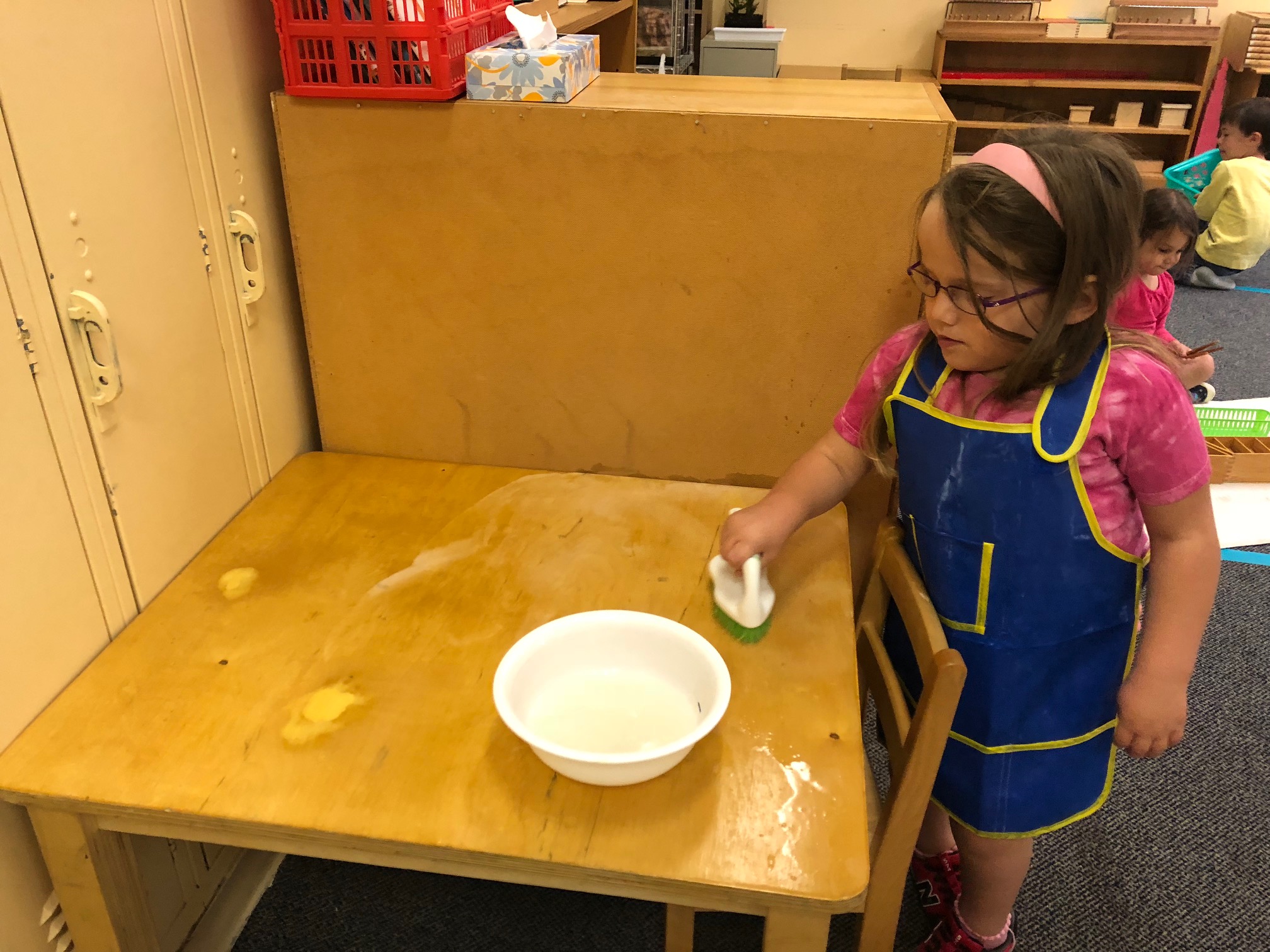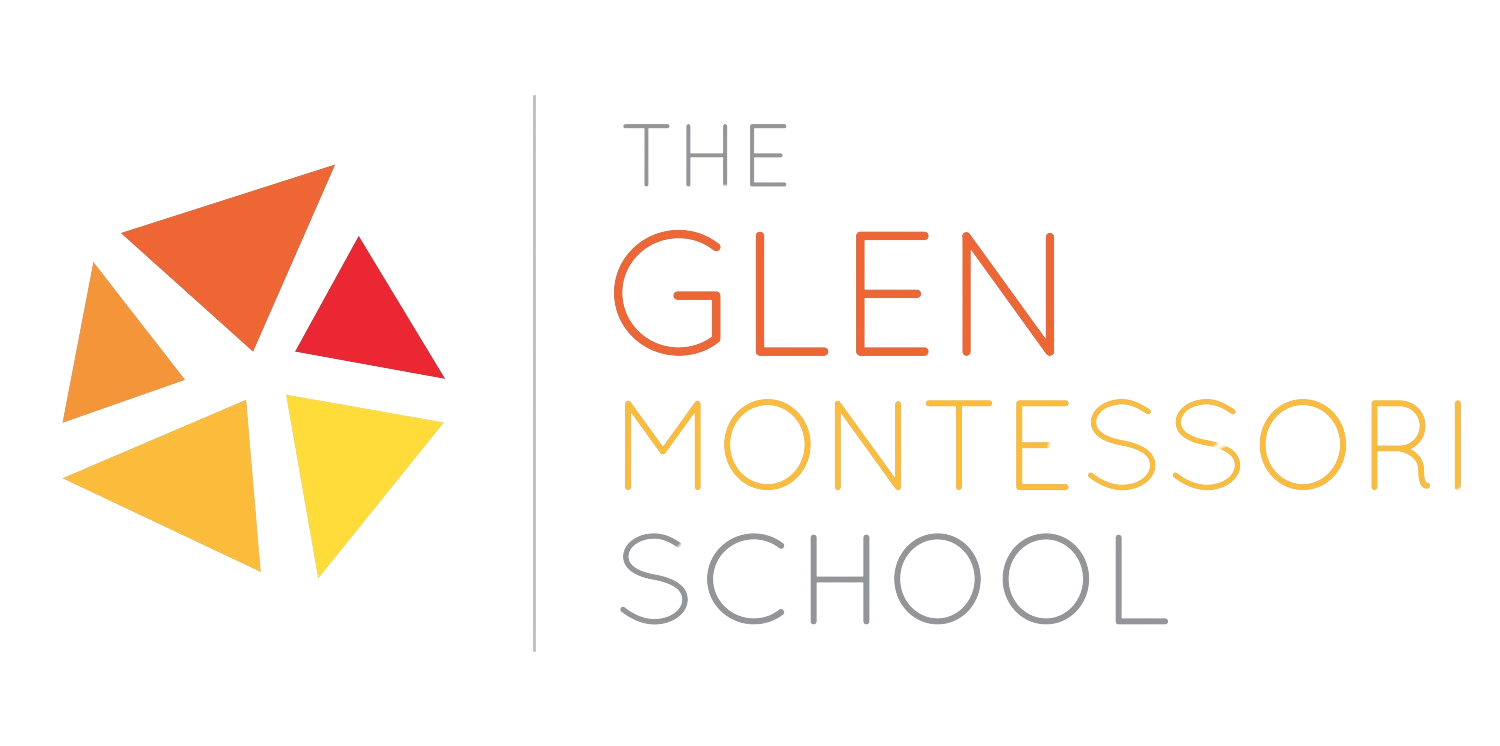Did you know that the Table Scrubbing Lesson in a Montessori classroom is 21 steps?

The Practical Life area is designed to strengthen fine motor skills and follow multiple step directions with care.
Practical Life is an essential part of a child’s development in the Montessori classroom. The children are usually first drawn to this area because most of the materials in Practical Life are everyday materials that the children recognize and feel comfortable using.
The main purpose of Practical Life is for a child to gain order, concentration, coordination, and independence. Dr. Montessori believed that a child must develop these skills to succeed in the classroom and life. Practical life activities also provide children the opportunity to develop inner discipline, confidence and a conception of a work cycle. Once children gain these skills they are ready to move into other areas of the classroom curriculum.
Did you know that the Table Scrubbing Lesson in a Montessori classroom is 21 steps?
You may be reading that and thinking that it seems excessive to break down such a simple task into so many steps. The point of the activity, however, is far bigger than just scrubbing a table. This activity teaches a child to follow a sequence of directions, all the while demonstrating careful movements.
This is how the work of Table Scrubbing breaks down:
First, the child must have prior experience in carrying a table (in case it has to be moved), hand washing, pouring, folding, and rock scrubbing.
Next, the appropriate materials must be assembled.
The following are needed: an apron, bucket or bowl, mat, three soap dishes, 2 hand towels, sponge, pitcher, scrub brush, and a bar of soap. These items are often kept together in a bin.
The Presentation:
1.) Consider the readiness of the child. Remember in a Montessori classroom we are following the child. We observe their behavior to determine what they need from us. This includes lessons.
2.) Invite the child to watch the presentation.
3.) Locate a table that needs to be washed.
4.) Bring the materials from the shelf and place in front of the table. Take out the apron, put it on, and push up sleeves.
5.) Take out the mat and spread it to the left of the table.
6.) Place the objects left-to-right on the mat.
7.) Remove the pitcher and take it to the sink carrying in an acceptable fashion.
8.) Fill the pitcher with warm water.
9.) Using both hands, carry the pitcher to the bucket/ bowl and pour slowly into the center of the bowl. Use a sponge to wipe the drip and place pitcher on the appropriate place on the mat.
10.) With the dominant hand, pick up the soap.
11.) Rub the (dry) soap over the table surface using a circular motion, working right to left.
12.) Replace the soap in the dish.
13.) With the dominant hand grasp the handle of the brush.
14.) Dip the brush in and out of the water in the bowl.
15.) Still inside the bowl, give the brush a shake.
16.) Move the brush to the top left corner of the table.
17.) Scrub with a circular motion moving to the right across the top of the table.
18.) Return to bowl to dip and shake (repeat as necessary scrubbing entire table.)
19.) Rinse and shake the brush in the bowl.
20.) Replace the brush on the soap dish.
Why is this work, and other practical life work important? What is gained, besides a beautifully cleaned table?
Through following this process of many sequential steps the child learns focus and order. The steps and materials are well organized and deliberate. The materials are carefully arranged left to right to provide an indirect preparation for reading. The child coordinates their movements and performs this task independently with skills they have mastered on their own.
The child also is left with a feeling of contribution and self-satisfaction as their work benefits their community.
Practical Life is about much more than the materials and the movements. It is about the stewardship, the community, and the trust.





